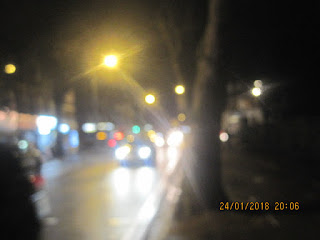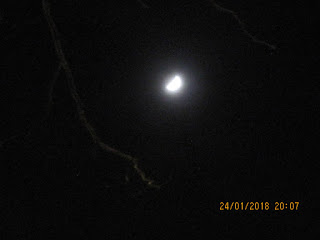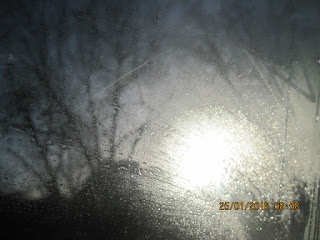1034-25-01-2018-THU- BAO NVNBP - LONDON - MOON SUN BY NAMNHIEN

Cá thòi lòi (danh pháp hai phần: Periophthalmodon schlosseri), là một loài cá thuộc họ Cá bống trắng (Gobiidae), được tìm thấy tại khu vực cửa sông, hạ lưu sông và biển ở vùng nhiệt đới trải dài từ Seychelles, Ấn Độ, Bangladesh, sang Australia, bao gồm cả Đông Nam Á (Indonesia, Malaysia, Philippines, Thái Lan và Việt Nam).[1] Cá thòi lòi phổ biến nhất dọc các bãi lầy ở cửa sông, không ngập quá 2 m nước.[1] Loài cá này sinh sống trong hang hốc vét ở bãi lầy. Khi thủy triều xuống thì cá chui ra, nhất là những ngày nắng ráo.
Cá có khả năng di chuyển trên mặt bùn khá nhanh, gần như chạy nhảy. Với hệ thống hô hấp bằng phổi cá thòi lòi có thể thở trên cạn. Khi dưới nước thì dùng mang. Khi trưởng thành, cá lớn khoảng 27 cm.
Người tuyết (Yeti) (tiếng Nepal: हिममानव, "người núi") là một sinh vật bí ẩn giống vượn cao hơn người trung bình và được cho rằng sống ở khu vực dãy Himalaya của Nepal và Tây Tạng.[3] Tên Yeti và Meh-Teh thường được dùng bởi người bản địa, và là một phần lịch sử thần thoại của họ. Câu truyện về Yeti được truyền bá đến phương Tây vào thế kỷ 19.
Cộng đồng khoa học thường cho Yeti là một huyền thoại, do thiếu bằng chứng kết luận,[4] nhưng nó vẫn là một trong những động vật huyền bí nổi tiếng nhất. Các nhà nghiên cứu tìm thấy một chuỗi ti thể ADN phù hợp với mẫu vật từ xương hàm gấu trắng Bắc Cực cổ đại tại Na Uy, vào khoảng giữa 40,000 và 120,000 năm trước
The name "Abominable Snowman" was coined in 1921, the same year Lieutenant-Colonel Charles Howard-Bury led the 1921 British Mount Everest reconnaissance expedition[19][20] which he chronicled in Mount Everest The Reconnaissance, 1921.[21] In the book, Howard-Bury includes an account of crossing the Lhakpa La at 21,000 ft (6,400 m) where he found footprints that he believed "were probably caused by a large 'loping' grey wolf, which in the soft snow formed double tracks rather like a those of a bare-footed man". He adds that his Sherpa guides "at once volunteered that the tracks must be that of 'The Wild Man of the Snows', to which they gave the name 'metoh-kangmi'".[21] "Metoh" translates as "man-bear" and "Kang-mi" translates as "snowman".[7][9][16][22]
Confusion exists between Howard-Bury's recitation of the term "metoh-kangmi"[19][21] and the term used in Bill Tilman's book Mount Everest, 1938[23] where Tilman had used the words "metch", which does not exist in the Tibetan language,[24] and "kangmi" when relating the coining of the term "Abominable Snowman".[9][16][23][25] Further evidence of "metch" being a misnomer is provided by Tibetan language authority Professor David Snellgrove from the School of Oriental and African Studies at the University of London (ca. 1956), who dismissed the word "metch" as impossible, because the consonants "t-c-h" cannot be conjoined in the Tibetan language."[24] Documentation suggests that the term "metch-kangmi" is derived from one source (from the year 1921).[23] It has been suggested that "metch" is simply a misspelling of "metoh".
The use of "Abominable Snowman" began when Henry Newman, a longtime contributor to The Statesman in Calcutta, writing under the pen name "Kim",[10] interviewed the porters of the "Everest Reconnaissance expedition" on their return to Darjeeling.[23][26][27][28] Newman mistranslated the word "metoh" as "filthy", substituting the term "abominable", perhaps out of artistic license.[29] As author Bill Tilman recounts, "[Newman] wrote long after in a letter to The Times: The whole story seemed such a joyous creation I sent it to one or two newspapers".[23]
25 July 2008, the BBC reported that hairs collected in the remote Garo Hills area of North-East India by Dipu Marak had been analyzed at Oxford Brookes University in the UK by primatologist Anna Nekaris and microscopy expert Jon Wells. These initial tests were inconclusive, and ape conservation expert Ian Redmond told the BBC that there was similarity between the cuticle pattern of these hairs and specimens collected by Edmund Hillary during Himalayan expeditions in the 1950s and donated to the Oxford University Museum of Natural History, and announced planned DNA analysis.[57] This analysis has since revealed that the hair came from the Himalayan goral.[58]
A group of Chinese scientists and explorers in 2010 proposed to renew searches in the Shennongjia Forestry District of Hubei province, which was the site of expeditions in the 1970s and 1980s
Beginning in 1957, an American Tom Slick funded a few missions to investigate Yeti reports. In 1959, supposed Yeti feces were collected by one of Slick's expeditions; fecal analysis found a parasite which could not be classified. Cryptozoologist Bernard Heuvelmans wrote, "Since each animal has its own parasites, this indicated that the host animal is equally an unknown animal."[44][45] The United States government thought that finding the Yeti was likely enough to create three rules for American expeditions searching for it: obtain a Nepalese permit, do not harm the Yeti except in self-defense, and let the Nepalese government approve any news reporting on the animal's discovery.[46] In 1959, actor James Stewart, while visiting India, reportedly smuggled the so-called Pangboche Hand, by concealing it in his luggage when he flew from India to London.[47]
In 1960, Hillary mounted an expedition to collect and analyze physical evidence of the Yeti. He sent a supposed Yeti "scalp" from the Khumjung monastery to the West for testing, whose results indicated the scalp was manufactured from the skin of a serow, a goat-like Himalayan antelope.
Up to the 1960s, belief in the yeti was relatively common in Bhutan and in 1966 a Bhutanese stamp was made to honor the creature.[48] However, in the twenty-first century belief in the being has declined.[49]
In 1970, British mountaineer Don Whillans claimed to have witnessed a creature when scaling Annapurna.[50] According to Whillans, while scouting for a campsite, he heard some odd cries which his Sherpa guide attributed to a Yeti's call. That night, he saw a dark shape moving near his camp. The next day, he observed a few human-like footprints in the snow, and that evening, viewed with binoculars a bipedal, ape-like creature for 20 minutes as it apparently searched for food not far from his camp.[citation needed]
In 1983, Himalayan conservationist Daniel C. Taylor and Himalayan natural historian Robert L. Fleming Jr. led a yeti expedition into Nepal's Barun Valley (suggested by discovery in the Barun in 1972 of footprints alleged to be yeti by Cronin & McNeely[51]). The Taylor-Fleming expedition also discovered similar yeti-like footprints (hominoid appearing with both a hallux and bipedal gait), intriguing large nests in trees, and vivid reports from local villagers of two bears, rukh balu ('tree bear', small, reclusive, weighing about 150 pounds (70 kg)) and bhui balu ('ground bear', aggressive, weighing up to 400 pounds (180 kg)). Further interviews across Nepal gave evidence of local belief in two different bears. Skulls were collected, these were compared to known skulls at the Smithsonian Institution, American Museum of Natural History, and British Museum, and confirmed identification of a single species, the Asiatic black bear, showing no morphological difference between 'tree bear' and 'ground bear.'[52] (This despite an intriguing skull in the British Museum of a 'tree bear' collected in 1869 by Oldham and discussed in the Annals of the Royal Zoological Society.)
con thuong luong
con rong chau au

THEO TRUYEN THUYET
CON THUONG LUONG O VN , TQ , CON THO TQ , MAT TRANG , CON GAU AN MAT TRANG MAT TROI , SU TICH LY THONG , THACH SANH , VOI CON TRAN LON VA DAI BANG LON CAP NGUOI DI , HAN VUONG CHEM RAN KHOI NGHIA -TQ , NGUOI TUYET - BIG FOOT - SNOW MAN O TAY TANG KHU VUC HYMALAP SON
CON CA THOI LOI CO CHAN CHAY LEN CAY BOI DUOI NUOC , CON VIT TROI BAY O TREN TROI , LAN XUONG NUOC ...Người miệt biển thường ví von giống cá chình to lớn ngoài đại dương là “thuồng luồng” biển
O CHAU AU – O SCOTAND – CON QUAI VAT HO LOCNESS , CON CUU VANG TRONG THAN THOAI HY LAP HAY LA CON NGUA DAU NGUOI , HEC QUYNH , CON BO TOT … con rong anh - chau a
COI LAI CAC TAM BIA DA NGAY XUA SE CO NHIEU DAU TICH
Ngày xưa ở Quận Cao Bình có vợ chồng Bác tiền phu Thạch Nghĩa tuổi đã cao mà không có con. Vợ chồng ngày đêm lo buồn, càng ra sức làm việc nghĩa, như khơi cống, đào mương, đắp đường, vét giếng, cùng lo nấu nước giúp cho người qua đường uống, để mong trời trông lại mà cho một mụn con. Quả nhiên, về sau Thạch Bà thụ thai, nhưng ba năm chưa đẻ. Giữa lúc đó, Thạch Ông mất, Thạch Bà sinh hạ một đứa con trai khôi ngô tuấn tú, đặt tên là Thạch Sanh. Sau đó mấy năm, Thạch Bà cũng mất, Thạch Sanh từ đó sống côi cút trong một túp lều dưới gốc đa, chỉ có một cái khố che thân và một cái búa đốn củi. Năm Thạch Sanh mười ba tuổi, Ngọc Hoàng sai tiên xuống dạy chàng đủ các môn võ nghệ, mọi phép thần thông.
Một hôm, có anh hàng rượu tên là Lý Thông đi ngang qua đó ghé lại nghỉ chân. Thấy Thạch Sanh khỏe mạnh, lại mồ côi, có thể lợi dụng được, bèn kết nghĩa làm anh em, rồi đưa Thạch Sanh về nhà.
Bấy giờ có một con trăn tinh thường bắt người ăn thịt, quan quân mấy lần vây đánh nhưng nó nhiều phép thần thông, nên không ai làm gì được; nhà vua đành truyền lập miếu thờ, và cứ hàng năm phải nộp cho nó một mạng người. Năm ấy đến lượt Lý Thông phải đi nộp mình. Mẹ con nghe tin, hoảng hốt, bàn định mưu kế đưa Thạch Sanh đi chết thay. Chiều hôm đó Thạch Sanh đi đốn củi về thì Lý Thông đãi rượu, rồi bảo:
-"Hôm nay có việc quan trọng, triều đình cắt phiên cho anh đi canh miếu thờ, ngặt vì anh trót cất mẻ rượu, sợ hỏng việc ở nhà; mong em chịu khó đi thay anh một đêm." Thạch Sanh không nghi ngờ gì cả, thuận đi ngay. công chúa con vua muốn kén phò mã, bảng yết khắp dân gian, điệp gửi cùng các nước, nhưng không chọn được ai vừa ý. Một hôm công chúa đi dạo vườn hoa, bỗng con yêu tinh Ðại bàng sà xuống cắp đi mất. Tình cờ đại bàng bay ngang trên cây đa có Thạch Sanh đang ngồi thẫn thờ dưới gốc cây. Thạch Sanh thấy vậy, liền gương cung bắn một phát trúng ngay vào cánh. Nhưng đại bàng rút tên ra rồi tiếp tục bay đi, Thạch Sanh lần theo vết máu đỏ, thấy đại bàng chui vào một cái hang rất kiên cố. Chàng đánh dấu lối vào hang và trở về. gặp Thạch Sanh, Lý Thông tỏ mối lo không tìm được công chúa. Thạch Sanh thật thà mà kể lại về việc bắn trúng cánh chim. Lý Thông mừng lắm, lập tức nhờ Thạch Sanh dẫn đường, mang lính đến nơi sào huyệt của yêu quái. Thạch Sanh tình nguyện xuống hang tìm công chúa hộ bạn. Quả nhiên gặp công chúa ở đó, Thạch Sanh bèn lấy thuốc mê, bảo công chúa đưa cho đại bàng uống. Ðoạn Thạch Sanh buộc công chúa vào dây, ra hiệu cho Lý Thông ở ngoài hang kéo lên. Xong chàng sửa soạn lên theo, nhưng Lý Thông đã ra lệnh cho quân lính lấp kín hang lại mất rồi. Giữa lúc đó thì đại bàng tỉnh lại. Thấy mất công chúa, hắn nổi giận lôi đình gầm lên, vách đá ầm ầm rung chuyển. Nhưng Thạch Sanh hoá phép đánh nhau với nó, cuối cùng đại bàng bị giết chết, Thạch Sanh mò tìm lối ra, đi đến một nơi, chàng thấy có một cũi sắt trong giam một người con trai. Thì ra đó là thái tử con vua Thủy Tề, bị đại bàng giam đã ngót một năm. Thạch Sanh lấy cung vàng bắn tan cũi sắt, cứu thái tử ra. Thái tử mời Thạch Sanh về thủy cung để vua cha được đền ơn. Vua Thủy Tề mừng lắm, tặng Thạch Sanh vô số vàng bạc châu báu, nhưng chàng đều từ chối không nhận, chỉ nhận lấy một cây đàn. Xong rồi từ giã vua và thái tử, lên trần gian, về chốn cũ ở gốc đa.
Một hôm, có anh hàng rượu tên là Lý Thông đi ngang qua đó ghé lại nghỉ chân. Thấy Thạch Sanh khỏe mạnh, lại mồ côi, có thể lợi dụng được, bèn kết nghĩa làm anh em, rồi đưa Thạch Sanh về nhà.
Bấy giờ có một con trăn tinh thường bắt người ăn thịt, quan quân mấy lần vây đánh nhưng nó nhiều phép thần thông, nên không ai làm gì được; nhà vua đành truyền lập miếu thờ, và cứ hàng năm phải nộp cho nó một mạng người. Năm ấy đến lượt Lý Thông phải đi nộp mình. Mẹ con nghe tin, hoảng hốt, bàn định mưu kế đưa Thạch Sanh đi chết thay. Chiều hôm đó Thạch Sanh đi đốn củi về thì Lý Thông đãi rượu, rồi bảo:
-"Hôm nay có việc quan trọng, triều đình cắt phiên cho anh đi canh miếu thờ, ngặt vì anh trót cất mẻ rượu, sợ hỏng việc ở nhà; mong em chịu khó đi thay anh một đêm." Thạch Sanh không nghi ngờ gì cả, thuận đi ngay. công chúa con vua muốn kén phò mã, bảng yết khắp dân gian, điệp gửi cùng các nước, nhưng không chọn được ai vừa ý. Một hôm công chúa đi dạo vườn hoa, bỗng con yêu tinh Ðại bàng sà xuống cắp đi mất. Tình cờ đại bàng bay ngang trên cây đa có Thạch Sanh đang ngồi thẫn thờ dưới gốc cây. Thạch Sanh thấy vậy, liền gương cung bắn một phát trúng ngay vào cánh. Nhưng đại bàng rút tên ra rồi tiếp tục bay đi, Thạch Sanh lần theo vết máu đỏ, thấy đại bàng chui vào một cái hang rất kiên cố. Chàng đánh dấu lối vào hang và trở về. gặp Thạch Sanh, Lý Thông tỏ mối lo không tìm được công chúa. Thạch Sanh thật thà mà kể lại về việc bắn trúng cánh chim. Lý Thông mừng lắm, lập tức nhờ Thạch Sanh dẫn đường, mang lính đến nơi sào huyệt của yêu quái. Thạch Sanh tình nguyện xuống hang tìm công chúa hộ bạn. Quả nhiên gặp công chúa ở đó, Thạch Sanh bèn lấy thuốc mê, bảo công chúa đưa cho đại bàng uống. Ðoạn Thạch Sanh buộc công chúa vào dây, ra hiệu cho Lý Thông ở ngoài hang kéo lên. Xong chàng sửa soạn lên theo, nhưng Lý Thông đã ra lệnh cho quân lính lấp kín hang lại mất rồi. Giữa lúc đó thì đại bàng tỉnh lại. Thấy mất công chúa, hắn nổi giận lôi đình gầm lên, vách đá ầm ầm rung chuyển. Nhưng Thạch Sanh hoá phép đánh nhau với nó, cuối cùng đại bàng bị giết chết, Thạch Sanh mò tìm lối ra, đi đến một nơi, chàng thấy có một cũi sắt trong giam một người con trai. Thì ra đó là thái tử con vua Thủy Tề, bị đại bàng giam đã ngót một năm. Thạch Sanh lấy cung vàng bắn tan cũi sắt, cứu thái tử ra. Thái tử mời Thạch Sanh về thủy cung để vua cha được đền ơn. Vua Thủy Tề mừng lắm, tặng Thạch Sanh vô số vàng bạc châu báu, nhưng chàng đều từ chối không nhận, chỉ nhận lấy một cây đàn. Xong rồi từ giã vua và thái tử, lên trần gian, về chốn cũ ở gốc đa.
Một nhóm các nhà thám hiểm người Nhật Bản khẳng định chắc chắn rằng họ đã phát hiện ra những dấu chân khổng lồ được cho là dấu vết của Người tuyết huyền thoại. Những dấu chân này được phát hiện trên dãy Himalaya khu vực Nepal và Tây Tạng
According to H. Siiger, the Yeti was a part of the pre-Buddhist beliefs of several Himalayan people. He was told that the Lepcha people worshipped a "Glacier Being" as a God of the Hunt. He also reported that followers of the Bön religion once believed the blood of the "mi rgod" or "wild man" had use in certain mystical ceremonies. The being was depicted as an apelike creature who carries a large stone as a weapon and makes a whistling swoosh sound.[30]
19th century
In 1832, James Prinsep's Journal of the Asiatic Society of Bengal published trekker B. H. Hodgson's account of his experiences in northern Nepal. His local guides spotted a tall, bipedal creature covered with long dark hair, which seemed to flee in fear. Hodgson concluded it was an orangutan.
An early record of reported footprints appeared in 1899 in Laurence Waddell's Among the Himalayas.[31] Waddell reported his guide's description of a large apelike creature that left the prints, which Waddell thought were made by a bear. Waddell heard stories of bipedal, apelike creatures but wrote that "none, however, of the many Tibetans I have interrogated on this subject could ever give me an authentic case. On the most superficial investigation it always resolved into something that somebody heard tell of."[
https://en.wikipedia.org/wiki/Yeti
con thuong luong
con rong chau au












































































































































































































No comments:
Post a Comment